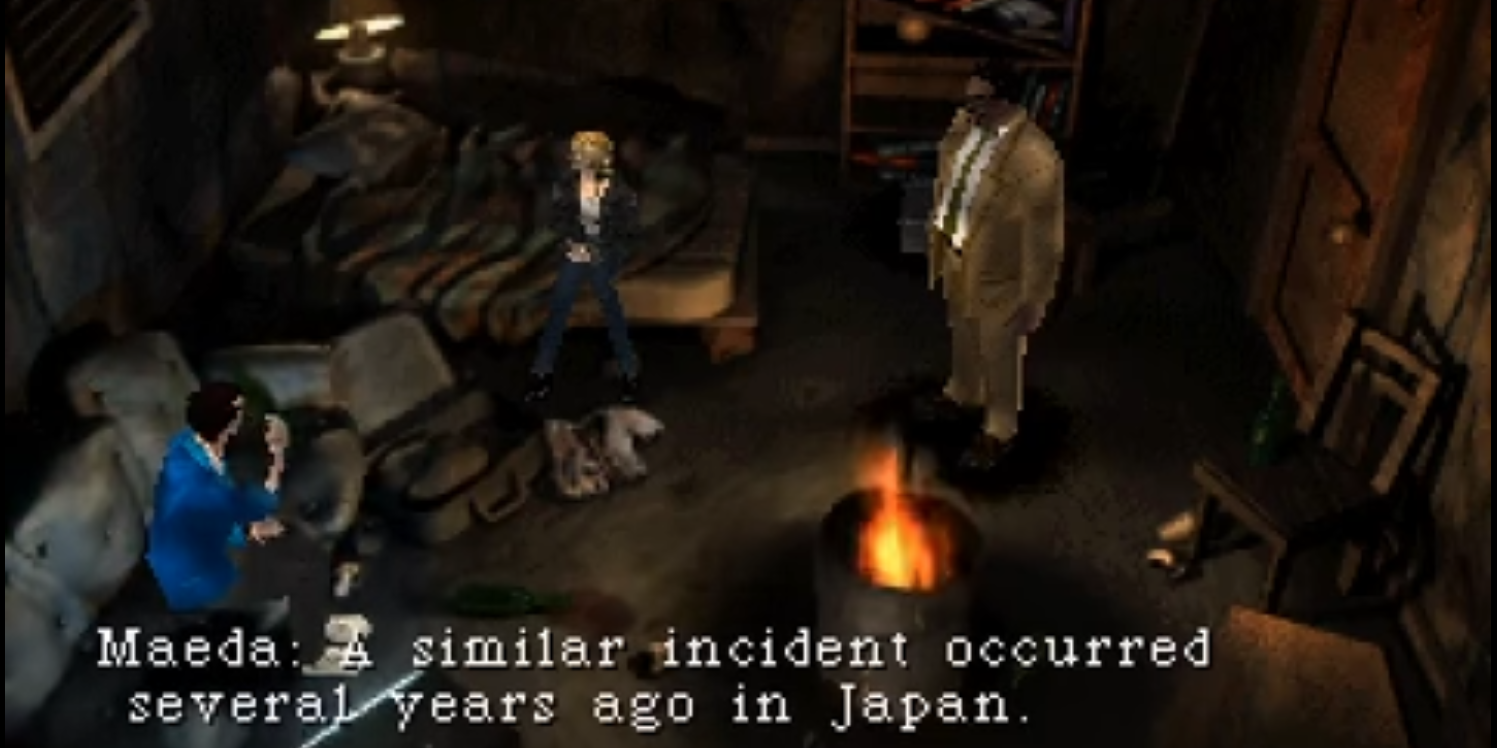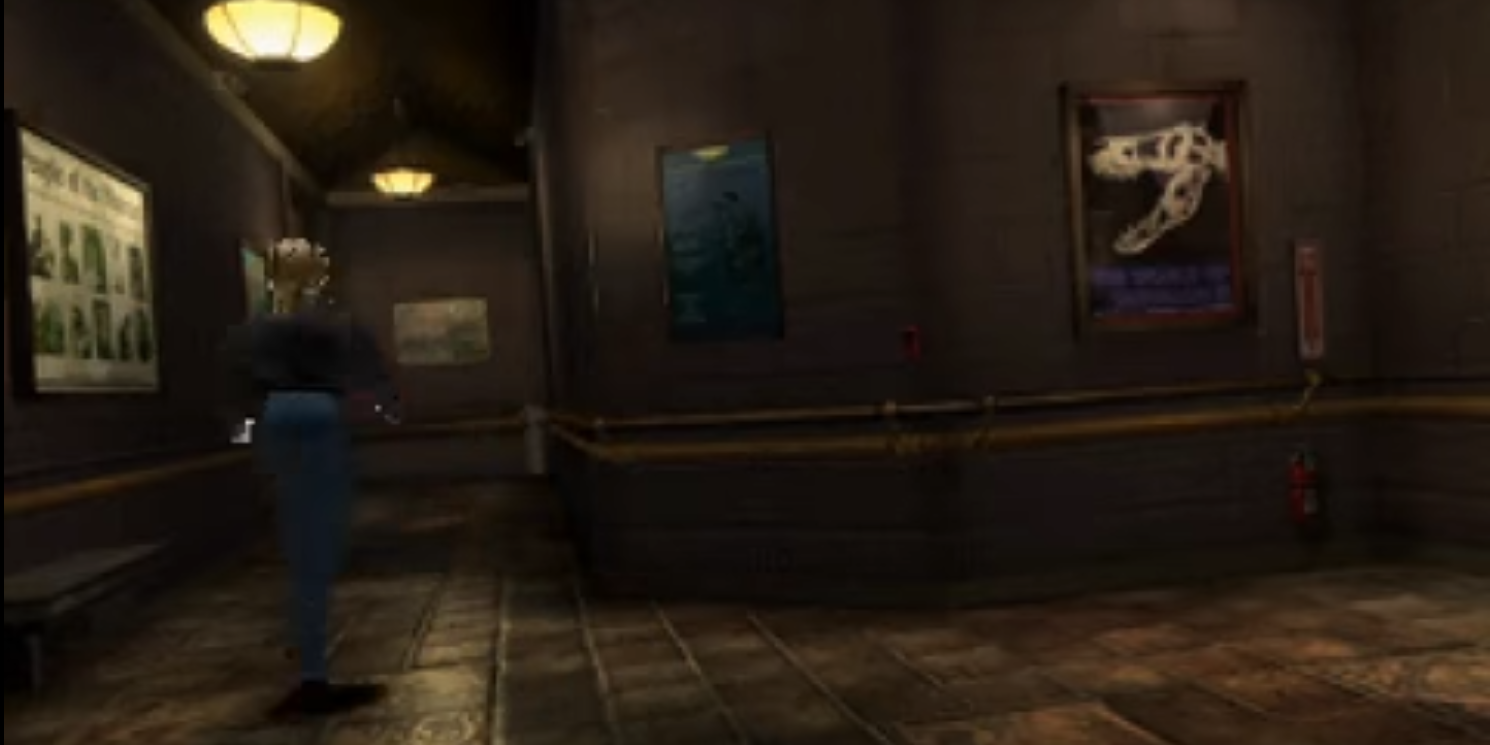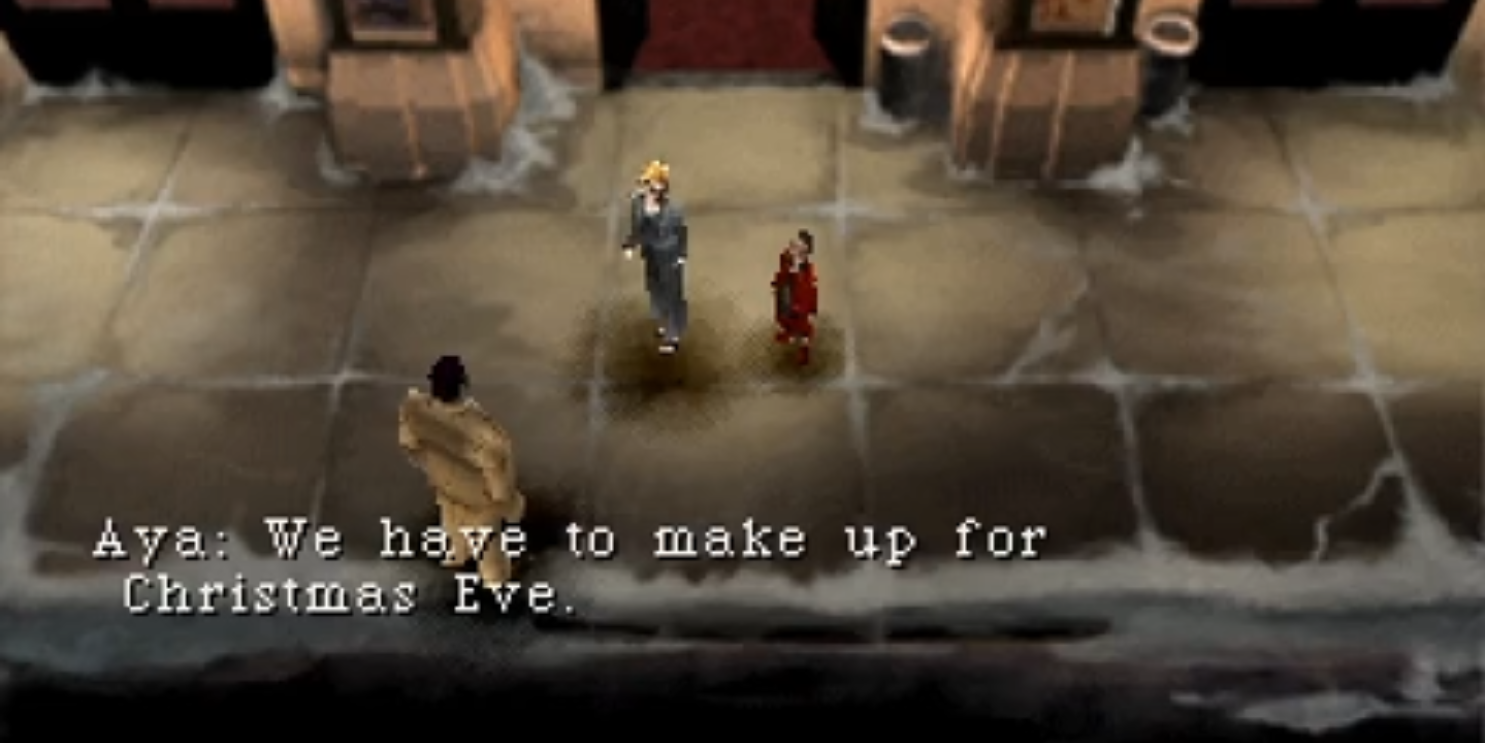If you want to be set for life, make a Christmas hit. Just ask Mariah Carey, Macaulay Culkin or Dr. Seuss and they’ll tell you—or just assume Suess would agree with the others. This nebulous juggernaut of a genre easily dwarfs other markets, with a die hard fan base to boot (Die Hard's also “Christmas”, right?). However, on the far other side, another genre hosts an equally passionate audience that would happily piss on a Hallmark film before they’d ever stream it: the hard sci-fi aficionados. But with such a shared zeal, wouldn’t it be great if sci-fi and Christmas could somehow, I don’t know, get together and share a moment in the spirit of the season?
Wish granted. In 1998, RPG Parasite Eve was that Christmas miracle.
Square Studio’s M-rated horror game remains not only one of Playstation’s beloved hit titles, but one that toed the unprecedented line between holiday and hard sci-fi with its unapologetic commitment to the complex source material all within a December setting.
In 1995, young Japanese pharmacologist Hideaki Sena penned his famous novel Parasite Eve, which, while definitely fiction, leaned hard into scientific elements. They say to write what you know, and the good doctor apparently did just that. Assuming that the majority of readers had a firm grasp on cell research, Sena stuffed the first half of the book with so much complex jargon that it felt like reading a thinly veiled research paper. It’s equal parts Frankenstein, sexy body swapping and tons and tons of talk about… mitochondria. That’s right, take a minute to rack your brain and remember that lesson from your Biology class.
OK, so essentially, mitochondria act as your cells’ powerhouse and create energy using oxygen from the nucleus. In a single cell, there are several hundreds of these little guys that control an organism's growth—and death. Indestructible, invisible and inevitably ripe for weaponizing, but by whom? At the time of Sena’s writing, a hot news item of the day was the discovery of Eve, the 200,000 year-old “mitochondrial” mother of Homo sapiens. Bingo, Dr. Sena. Parasite Eve’s eponymous villain was the seductive and sentient ringleader of a mitochondrial army set to overturn the human race by way of incomprehensible pharmacology lingo and the creation of the Ultimate Being, a creature born from a host impregnated with Eve’s cells. Ickyness abound.
Whether it was Dr. Sena’s master plan or not, Parasite Eve’s inclusion of such obscure scientific language was an interesting exercise in latent learning, leaving half the critics scrambling for their dictionaries, and the other half hailing it as a new dawn of Japanese horror. High praise indeed, and as such positioned it to be adapted into manga, film and a series of video games. Riding high after their success with Final Fantasy VII, Square Studios gladly took up the challenge of carrying on the doctor’s good work and adroitly adapted Parasite Eve into a 3D low-poly smash for Playstation, albeit with a few liberties. Most noticeably, the setting and season. The game opens to New York in winter. From a bird’s-eye view of Manhattan’s honking cars lining the streets, to the lit Christmas tree at Rockafeller Plaza, where the camera conspicuously zooms in on a bright red ornament engraved with a boilerplate “Merry Christmas 1997” greeting. Anyone who’s been in New York during Christmas can attest to the accuracy of these iconic sights, but the juxtaposition of an ominous piano score serves a disconcerting reminder that this is no holiday game. In fact, the first time I played it, I recall a slight twinge of excitement. An M-rated genetic-mutant-fighting RPG that transpires on Christmas Eve? Oh, thank you, Santa!
To place any plot squarely in the middle—or peripherals—of the Christmas season is a slippery slope. If purely intentional, you’d better be “Ho, Ho, Ho”-ing the hell out of it with family humor, warm fuzzy feelings and emotional catharsis by the end of the experience. If unintentional, then you’d better be able to justify your reasons for encroaching on the sanctity of the holiday genre.
To the latter’s credit, there are actually multiple proven instances when “Non-Christmas” Christmas vehicles work. Who doesn’t love some Gremlins? If you consider the multiple iterations of Charles Dickens' bulletproof classic, A Christmas Carol, they’re all really cautionary ghost stories happening conveniently on December 24th. Get a load of the opening: “Marley was dead, to begin with.” It’s almost as if the events in the story would make more sense at the end of October. Thankfully, Dickens stuck to his guns and made it OK to be uncomfortable at Christmas. The same can be said for Parasite Eve.
Christmas in Manhattan is not always the best time or place on Earth to find examples of peace and goodwill towards men.
The game’s grim plot plays into the coldness and existential dread of the season, especially in New York. Christmas in Manhattan is not always the best time or place on Earth to find examples of peace and goodwill towards men. Sub-zero temperatures relocate the homeless to the morgue, while greed merrily swaps hands at the Stock Exchange. Freezing winds whip around skyscrapers and right into your bones as you fight to get a taxi. On an emotional level, it is a time of intense pressure to circumvent any unfortunate circumstances going on and bust your ass to make it “the best Christmas ever!”
If you’re a Scrooge-like misanthrope, Parasite Eve’s significant lack of random NPCs and pedestrians in one of the world’s most densely-packed cities (spoilery note: during the mid-to-latter part of the game, most of New York has either spontaneously combusted, been melted down into a mass pile of cellular sludge, or killed off by mutant animals), will be a breath of fresh air to you. By no means am I saying that what Eve did was cool. But, since there’s no one around anyway, why not take some time to wander the queue-free museums, stop to admire the stark winter beauty of Central Park and speed along the snow-packed streets of New York at high speeds without regard to traffic laws? Take it as a little Christmas present to yourself.
Regardless of the game’s isolated mood, there are some legitimate Christmas-y takeaways. Eve’s intentions are entirely narcissistic and self-serving, which is what is later explained to be what genes inherently are. To that note, the game contains a Christmas lesson from the evolutionary biologist, Richard Dawkins, who is quoted throughout the game. In response to his Selfish Gene theory (genes keep their human host safe only to pass on their genes to the next host), Dawkins, in a very fitting holiday style, has this to say: “Let us try to teach generosity and altruism, because we are born selfish.” It is only because of the generosity, kindness and selflessness of Aya, the main protagonist, that good ultimately wins over evil.
It’s never really spelled out why the game’s bio-baddie Eve chose Christmas Eve (hold on…Christmas Eve?…Parasite Eve?…nah, too obvious) to launch her mitochondrial attack, but an explanation isn’t necessary. Like eggnog, the seemingly incompatible ingredients work in the end. The game’s use of cold science set against an equally chilly backdrop pairs well with the (occasionally deadly) red-hot body heat of grisly genetic mutation.
Parasite Eve may be an older title, but the message and gameplay are still as potent as ever, especially in the dead of winter. While we enjoy a long winter’s nap after decking the halls, our cells will keep working 24/7 with no regard to our holly jolly traditions. In the immortal words of Richard Dawkins, "DNA neither cares nor knows. DNA just is. And we dance to its music.” God bless us everyone!





